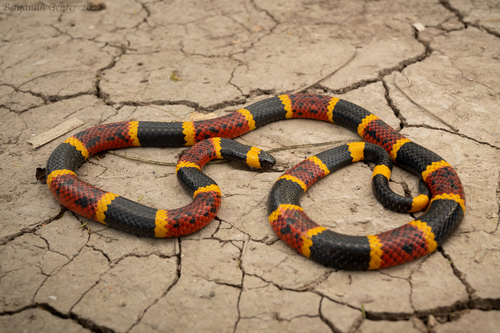
Texas Coral Snake
The Texas coral snake, Micrurus tener, dazzles with vivid red, yellow, and black rings. Though highly venomous, it is shy and retreats into woodlands and grasslands. Its significant role in controlling pest populations highlights its ecological importance, despite its elusive nature.
10-15 years
Lifespan
Yellow, Red, Black
Color
Low
Aggression
Least Concern
Conservation Status
Stable
Population Trend
Characteristics
Micrurus tener, commonly known as the Texas coral snake, is a slender, venomous serpent with striking red, yellow, and black banding. Native to the southern United States and northeastern Mexico, it inhabits wooded areas and grasslands. Notably, its potent neurotoxic venom is rarely utilized, as it is a reclusive species.
Distribution Range of the Texas Coral Snake
Micrurus tener, commonly known as the Texas coral snake, is native to the southeastern United States and parts of northeastern Mexico. Its geographical distribution includes the states of Texas, Louisiana, Arkansas, and parts of Oklahoma in the United States, extending into the Mexican states of Nuevo León, Tamaulipas, and Coahuila.
Texas Coral Snake's Habitat
Environmental Conditions
The Texas coral snake typically inhabits regions with warm, humid climates. It is often found in wooded areas, grasslands, and savannas, preferring environments that provide ample ground cover such as leaf litter, fallen logs, and dense vegetation. The species is also known to inhabit areas near streams and rivers, where humidity levels are higher.
Ecological Niche
Micrurus tener occupies an ecological niche as a predator of small vertebrates, primarily feeding on other snakes, lizards, and occasionally small mammals. Its specialized diet and secretive nature allow it to thrive in its native habitat despite competition from other predators. The Texas coral snake is fossorial, spending much of its time underground or hidden under debris, which helps it maintain moisture and avoid predators.
Copyright @ Nature Style Limited. All Rights Reserved.
 English
English